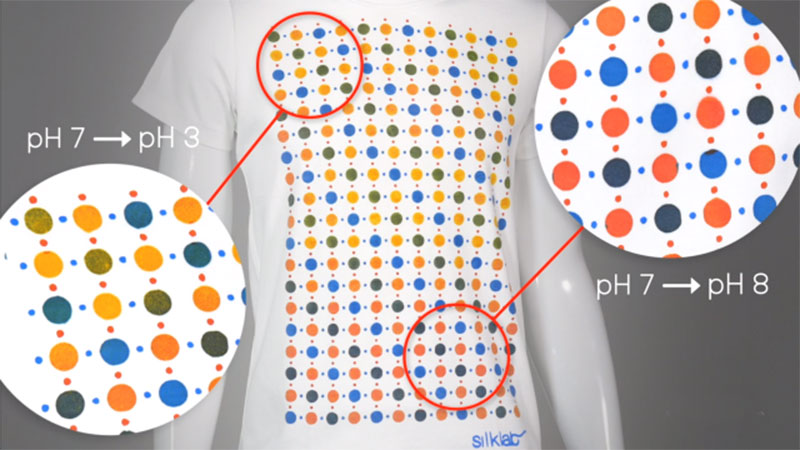A team of researchers at Tufts University’s School of Engineering have developed biomaterial-based inks that respond to chemicals released from the body in fluids like sweat as well as other environmental elements by changing color. The inks can be screen printed onto textiles such as clothes, shoes, or even face masks in complex patterns and at high resolution, providing a detailed map of human response or exposure. The advance in wearable sensing, reported in Advanced Materials, could simultaneously detect and quantify a wide range of biological conditions, molecules, and, possibly, pathogens over the surface of the body using conventional garments and uniforms.
Read more Smart Clothes to Contribute Over $11 Bn to Fitness Wearable Revenue by 2025, Says Juniper Research
“The use of novel bioactive inks with the very common method of screen printing opens up promising opportunities for the mass-production of soft, wearable fabrics with large numbers of sensors that could be applied to detect a range of conditions,” said Fiorenzo Omenetto, corresponding author and the Frank C. Doble Professor of Engineering at Tufts’ School of Engineering. “The fabrics can end up in uniforms for the workplace, sports clothing, or even on furniture and architectural structures.”
Wearables incorporate electronics in patches, wristbands, and other devices to monitor the wearer’s health. Tufts researchers took a different approach – non-electronic, colorimetric detection of a theoretically very large number of analytes using sensing garments that can be distributed to cover very large areas: anything from a patch to the entire body, and beyond, reports Tufts University.
The components that make the sensing garments possible are biologically activated silk-based inks. The soluble silk substrate in these ink formulations can be modified by embedding various “reporter” molecules – such as pH-sensitive indicators, or enzymes like lactate oxidase to indicate levels of lactate in sweat. The former could be an indicator of skin health or dehydration, while the latter could indicate levels of fatigue of the wearer. Many other derivatives of the inks can be created due to the versatility of the silk fibroin protein by modifying it with active molecules such as chemically sensitive dyes, enzymes, antibodies, and more. While the reporter molecules could be unstable on their own, they can become shelf-stable when embedded within the silk fibroin in the ink formulation.

The inks are formulated for screen printing applications by combining with a thickener (sodium alginate) and a plasticizer (glycerol). The screen printable bio-inks can be used like any ink developed for screen printing, and so can be applied not just to clothing but also to various surfaces such as wood, plastics, and paper to generate patterns ranging from hundreds of microns to tens of meters. While the changes in color presented by the inks can provide a visual cue to the presence or absence of an analyte, use of camera imaging analysis scanning the garments or other material can gather more precise information on both quantity and high resolution, sub-millimeter mapping.
Read more From Pregnant Mothers To Pets, Japan Is Making Swift Progress In The Race For Smart Clothes
“The screen printing approach provides the equivalent of having a large, multiplexed arrangement of sensors covering extensive areas of the body if worn as a garment, or even on large surfaces such as room interiors,” said Giusy Matzeu, research assistant professor of biomedical engineering at Tufts School of Engineering and first author of the paper. “Coupled with image analysis, we can obtain a high-resolution map of color reactions over a large area and gain more insight on the overall physiological or environmental state. In theory, we could extend this method to track air quality, or support environmental monitoring for epidemiology.”












